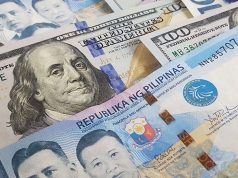Peso declines on strong US data, dollar demand
THE PESO grew weaker yesterday as the dollar picked up steam on the back of improving factory output in the United States, coupled with domestic corporate demand and profit taking which pushed the currency lower.
The local unit closed at P51.405 versus the greenback, down 7.5 centavos from Tuesday’s P51.33 finish.
The peso depreciated throughout Wednesday’s session as it opened at P51.37, and even hit a trough of P51.425 against the dollar. It touched P51.35 as its best showing for the day before settling at the closing rate.
One trader said the downward move of the peso was likely a reaction to a stronger dollar, which was supported by positive data overseas.
“The peso depreciated on Wednesday as the dollar’s appeal improved following the release of better-than-expected US industrial production report,” one trader said.
Reuters reported that US factory output expanded by 0.3% in September, reversing a 0.7% drop in August as the impact of the twin hurricanes waned.
Another trader pointed out that the weaker peso seen yesterday may have been due to buying interest among local corporates which was also supported by profit taking. The bellwether Philippine Stock Exchange index dropped by 0.78% to 8,431.73 from the fresh record high recorded on Tuesday.
Overall, the second trader also attributed Wednesday’s “muted” session to a wait-and-see stance taken by market players, as they “await new leads to dictate the direction of dollar-peso trading.”
Investors traded $497.6 million during the session, lower than the $893.2 million exchanged the previous day and lower than the $500-600 million daily average.
For today, the first trader expects the exchange rate to move within the P51.30 to P51.50 range, noting that the peso could depreciate further as a result of possibly hawkish remarks from Federal Reserve officials in their scheduled speeches. The trader added that possibly weaker growth for the Chinese economy could spur safe-haven buying in favor of the dollar.
On the other hand, the second trader sees the peso moving within P51.25-P51.45, noting that any data catalysts could influence the exchange rate.
Asian currencies were subdued on Wednesday as investors waited for any clues on the outlook for China’s foreign exchange policy from a key Communist Party Congress.
President Xi Jinping said in his opening speech to the twice-a-decade gathering early in the day that China will deepen market-oriented reforms of exchange rates and interest rates, reiterating an oft-heard government pledge.
The Chinese yuan ticked up against the dollar, after the People’s Bank of China set its official yuan midpoint at 6.5991 to the dollar.
The Singapore dollar also ticked up against the dollar, while the Malaysian ringgit was closed for a national holiday. — Melissa Luz T. Lopez with Reuters



